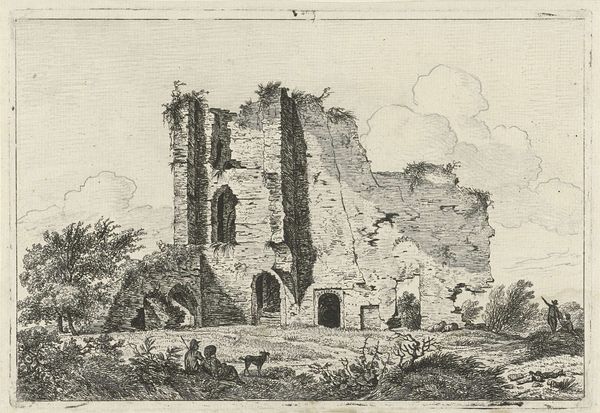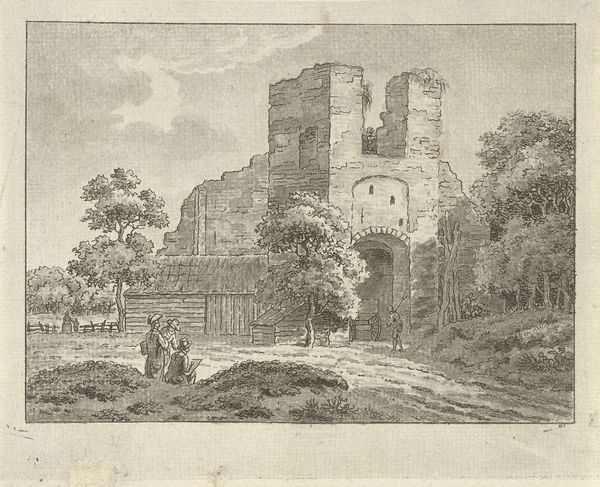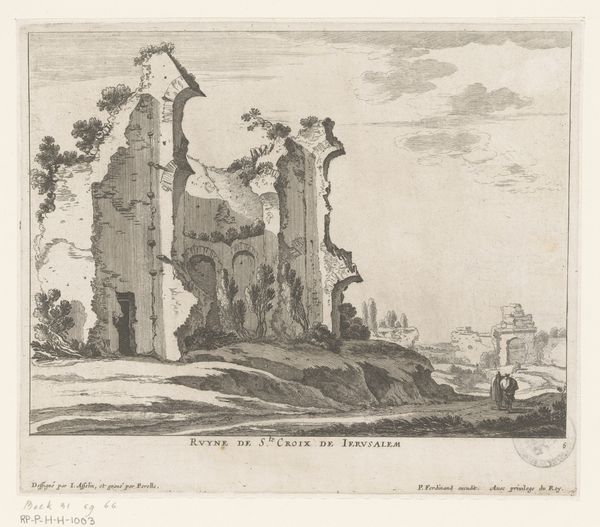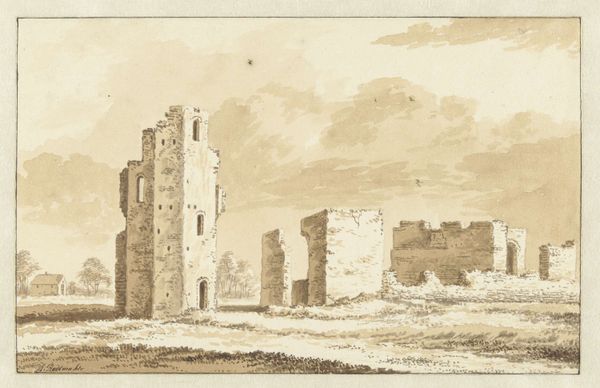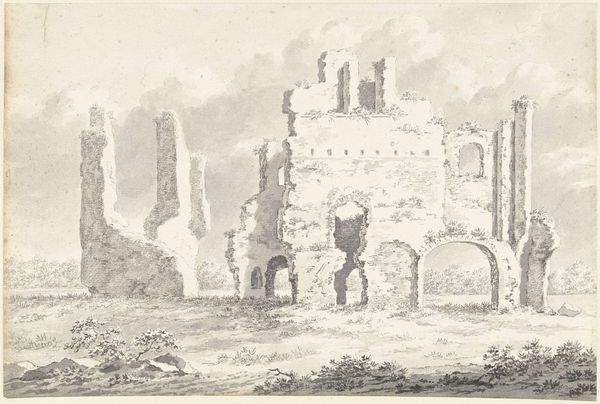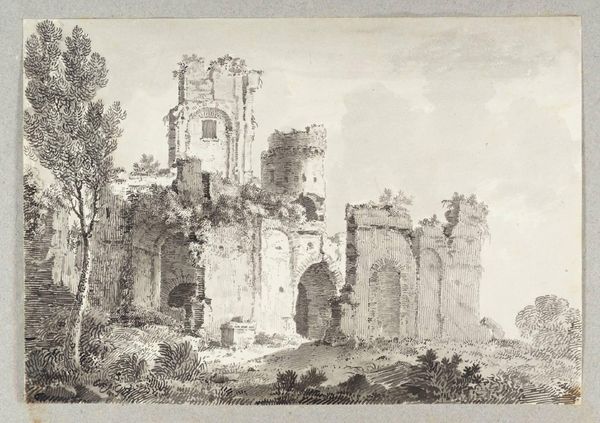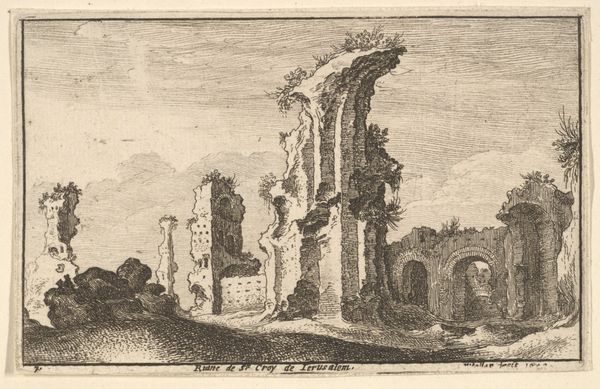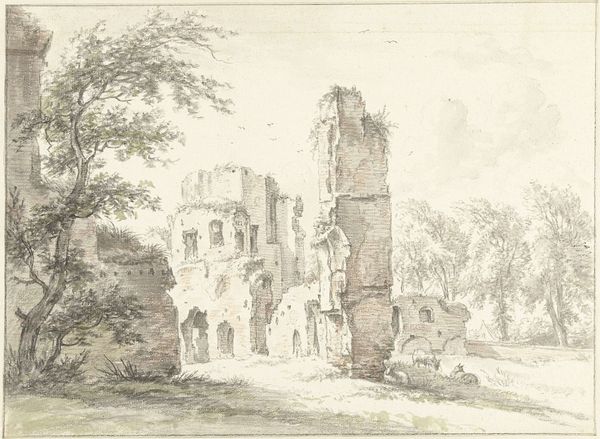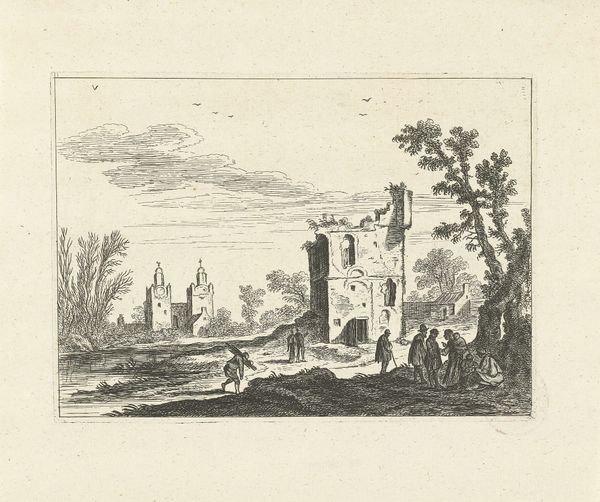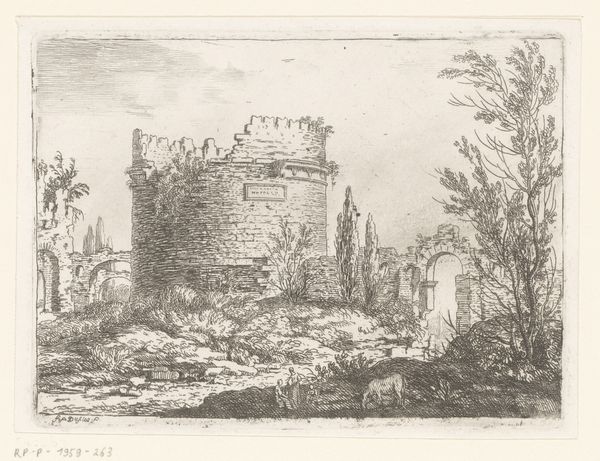
drawing, paper, ink, architecture
#
drawing
#
baroque
#
dutch-golden-age
#
landscape
#
paper
#
ink
#
cityscape
#
history-painting
#
architecture
Dimensions: height 151 mm, width 240 mm
Copyright: Rijks Museum: Open Domain
Abraham Rademaker made this drawing of the Ruïne van het huis te Vliet in the Lopikkerwaard using pen and brown ink, and brown wash. The sepia tones are typical of the period, achieved by diluting ink to create washes of different intensity. Rademaker’s technique gives a sense of depth and atmosphere to the ruined building, emphasizing its texture, and the rough edges of broken brickwork and stone. This aesthetic approach – finding beauty in decay – was quite typical of the period. The image has a melancholy quality, inviting reflection on the transience of human endeavor. Rademaker was part of a tradition of topographical artists, documenting buildings and landscapes. His approach was essentially that of a chronicler, and he has imbued the scene with both a sense of specificity, and a deeper meditation on history. In the end, this artwork reminds us that materials, techniques, and their cultural context are all vital to understanding a work of art fully, blurring the lines between craft, fine art, and historical record.
Comments
No comments
Be the first to comment and join the conversation on the ultimate creative platform.
